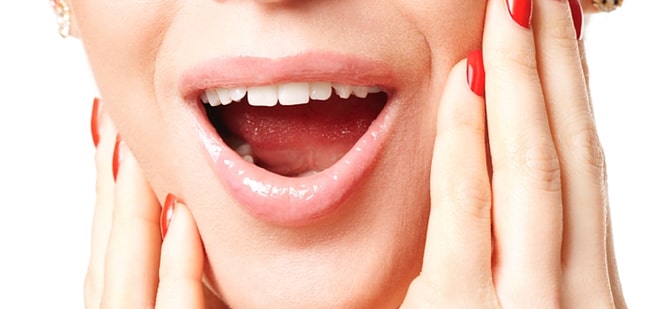
The Temporo-Mandibular Joint (TMJ) allows movement of jaw in relation to the skull. A number of muscles attached to the skull and jawbone cause the jawbone to move as the mouth is opened and closed. The joint contains cartilage disc lubricated by fluid to ensure movement is smooth and frictionless.
TMJ dysfunction is a very common problem affecting up to 33% of individuals within their lifetime. TMJ symptoms may occur on one or both sides of the jaw.
How do TMJ problems develop?
TMJ symptoms can commence as a result of a one off injury (eg. Blow to the jaw or face in sport) or as a result of repetitive motion and has many similarities to other “wear and tear” musculoskeletal disorders affecting other parts of the body (a type of osteoarthritis).
TMJ disorder can also be the result of malalignment of the teeth (the bite), clenching or grinding of the teeth and stress. These cause the muscles surrounding the jaw to overwork which can cause joint derangement. TMJ dysfunction has also been linked to issues in the cervical spine or neck.
In rare cases TMJ pain can result from inflammation of the joint caused by disease process such as rheumatoid arthritis or gout.
What are the symptoms?
TMJ disorder symptoms include (but are not limited to):
- Clicking, popping or grating noises as you chew or move your mouth
- Muscle spasms around the jaw
- Pain in front of the ear that may spread to the cheek, ear and temple
- Difficulty opening the mouth – the jaw may feel tight, as if it is stuck or locked, making eating difficult
- Headache or earache
Treatment for TMJ Dysfunction
Many other conditions can cause similar symptoms to TMJ dysfunction including toothache, sinus problems, arthritis, gum disease and earache. For this reason you should always see your Dentist or Doctor if you have jaw pain.
Your Dentist will conduct a careful examination to determine the cause of your symptoms and rule our any other causes of your pain. Your Dentist may order further investigations such as x-‐rays or MRI to assist with diagnosis.
Dental Treatment
Your Dentist may perform correct dental treatments including replacing missing teeth and using crowns, bridges or braces to balance the biting surfaces of your teeth and correct your bite. Correcting alignment may reduce the pressure on your muscles and joint and relieve the pain. Your Dentist may also prescribe medications, which can be taken temporarily to ease your symptoms.
How can physiotherapy help?
Once a TMJ disorder is diagnosed, physiotherapists may perform treatment techniques to aid in realigning the TMJ and correcting its movement patterns.
These treatments can include:
- Joint mobilisations where your Physiotherapist will gently glide the TMJ from either inside or outside of your mouth to assist with joint movement
- Massage to the jaw muscles to relieve tension that may be pulling on the TMJ
- Exercises to correct TMJ movement and/or jaw muscle strength and coordination
- Treatment of surrounding areas of the body such as the neck which are commonly present with TMJ dysfunction
- Assistance to improve your posture including setting up your car or desk to maintain optimal positioning
What can you do?
The best course of treatment is to seek advice from your Dentist, Doctor or Physiotherapist. They can ensure you are properly diagnosed and guide you to an appropriate treatment plan.
In the meantime you can try some of the following to relieve your symptoms:
- Heat or ice packs applied to the jaw. Heat and ice may also be applied to the neck or forehead should pain present in these areas
- Avoid over opening the mouth. Cut food into small pieces and try making a fist under your chin when yawning
- Eat soft foods
- Avoid leaning your chin on your hands or holding your phone between your ear and shoulder
- Ensure you sit and stand with good posture
- Learn relaxation techniques to assist with stress such as yoga, meditation and massage. If stress persists you may like to speak with a psychologist who can provide further direction to assist with relaxation.
